Overview - Output Setting Interface
Clicked 'RUN' button, you will see the following output interface.
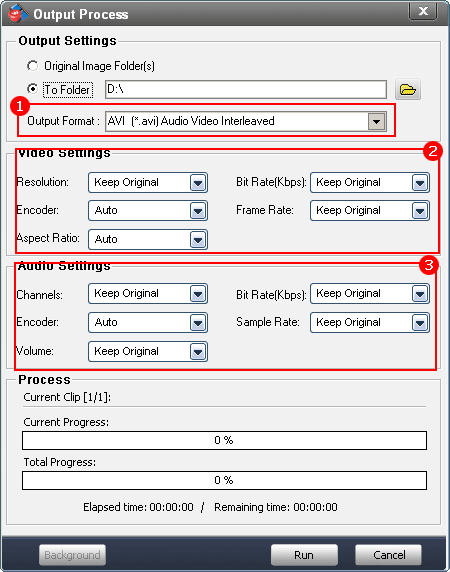 The tutorial includes three parts:
The tutorial includes three parts:

Output format
We have rich output formats like AVI, MPEG, MP4, WMV, MMKV,etc
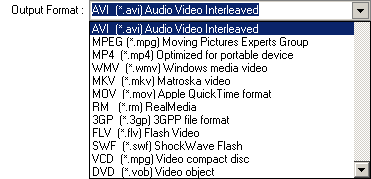

Output video setting
We have professional video settings for output includes:
2-1,
Video resolution - most video resolution in default, you can also keep original resolution to output.
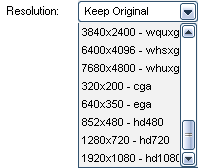
2-2, Video bit rate - If you do not know what is video Bit Rate, you can select 'Keep Original', here are common Bit Rate settings:
| 128*96 = 64 kbps |
160*120 = 128 kbps |
320*240 = 384 kbps |
352*288 = 512 kbps |
| 640*480 = 640 kbps |
704*576 = 900 kbps |
800*600 = 1500 kbps |
1024*768 = 2000 kbps |
| 1280*1024 = 3000 kbps |
1366*768 = 3000 kbps |
1600*1024 = 4000 kbps |
2560*1600 = 8000 kbps |
(HD 480P)
852*480 = 3000 kbps |
(HD 720P)
1280*720 = 4000 kbps |
(HD 1080P)
1920*1080 = 10000 kbps |
|
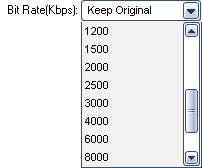
2-3, Encoder - we recommend common user keep default option, this function just for advanced user.
DivX: A brand name of products created by DivX, Inc. (formerly DivXNetworks, Inc.), including the DivX Codec which has become popular due to its ability to compress lengthy video segments into small sizes while maintaining relatively high visual quality.
XviD: High Compression, High Quality, Low Bitrate. Variation of MPEG-4. Very good results, usually found in .avis, .mp4s, and possibly .xvid)
H264: H.264 AVC is a standard for video compression. The final drafting work on the first version of the standard was completed in May 2003. H264 keep High Compression, High Quality, is popular and hot encoder.
MPEG4: Defines how multimedia streams – video, audio, text, data – are transmitted as individual objects. MPEG-4 is a compression/decompression technology that aims to achieve interactivity, efficiency and stability in narrow-band transmissions
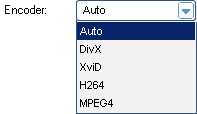
2-4, Frame rate, or frame frequency, is the frequency (rate) at which an imaging device produces unique consecutive images called frames. The term applies equally well to computer graphics, video cameras, film cameras, and motion capture systems.
The frequency at which film or video frames run (ie 24 fps; 29.97 Hz in NTSC; 25 Hz in PAL European format).
10 fps most use for cell phone, 30 fps most use for HD movie.
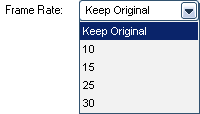
2-5, Aspect Ratio - we have popular video aspect ratio options, if you want to keep original ratio, select 'Auto'
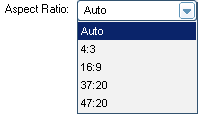

Output audio setting
In most, you do not make any changes of output setting.
 Home
Home






